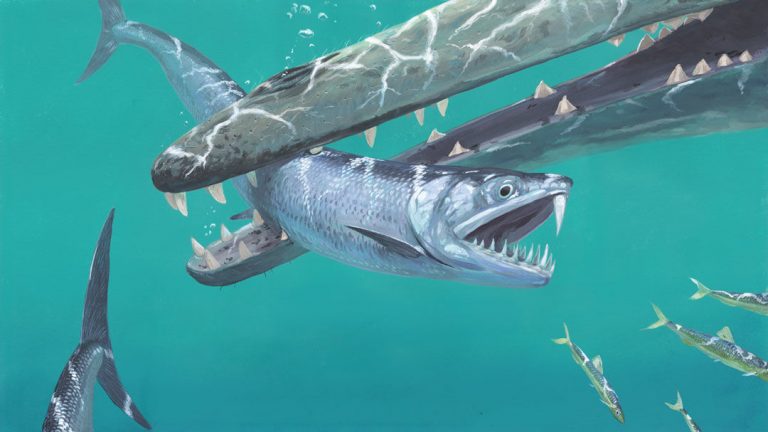Dinosaurs and large predators went extinct some 65 million years ago, but there a few species lived through all these years evolving themselves. The plankton hunting anchovies that we eat today were fish eating predators,according to a new study.
Researchers examined a 30-centimeter-long fossil embedded in a rock formation near Chièvres, Belgium, and another partial fossil from Pakistan’s Punjab province. They were between 41 million and 54 million years old, with both shared a peculiar feature: a single saber tooth in the upper jaw.
Micro-computed-tomography(a scaled down version of the technique doctors use to scan our body at the hospital) was used to get the high-resolution images of the fish skulls. The images revealed rows of fangs on the fishes’ lower jaws and a pointy saber tooth on the upper jaw. The fossil from Pakistan was new species, and researchers named it Monosmilus chureloides after the churel—a shapeshifting creature with sharp fangs that features in many South Asian legends.
Both specimens are believed to be the close cousins of today’s anchovies, according to the researchers. But unlike their relatives, these ancient anchovies likely to have used their fangs to catch their prey,written by the researchers at Royal Society Open Science.
This unexpected discovery highlights the extraordinary evolutionary tinkering that followed the end-Cretaceous extinction event, with saber-toothed anchovies living alongside familiar fish groups that inhabit today’s oceans.

My sister saved this internet site for me and I have been going through it for the past several hrs. This is really going to assist me and my classmates for our class project. By the way, I like the way you write.
I genuinely enjoy looking through on this internet site , it has got good posts .